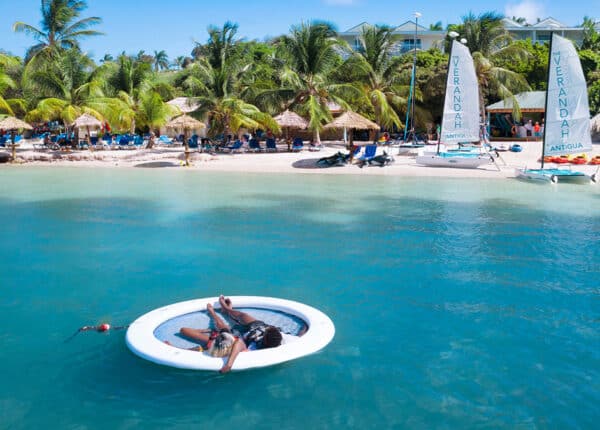Op-Ed: Ilio Durandis: Is Haiti Really Open for Business?
Above: UN Humanitarian Chief Valerie Amos and Haitian President Michel Martelly (UN Photo/Marco Dormino)
By Ilio Durandis
At least since 2009, Haitian politicians have taken deep pride in saying that Haiti is open for business. I remember back in the summer of that year, attending a Haitian-Diaspora congress in Miami, then-Prime Minister Duvivier Pierre-Louis stood in the audience and proclaimed that Haiti was open for business. Not long afterwards she received a vote of non-confidence from the Haitian Parliament, and was kicked out of office.
After the earthquake of 2010, former Prime Minister Jean-Max Bellerive along with United Nations Special Envoy President Bill Clinton used the theme of “Build Back Better” to emphasize what and how Haiti was going to move forward post-earthquake. The agenda of “build back better” aligned itself perfectly with the slogan of “Haiti is open for business,” but to whom, no one knows.
The same theme or slogan has been a constant, ever since President Martelly took office on May 14 of this year. To the casual observer, it might seem as if the plane of progress is about to take off, when it comes to Haiti, but to the more savvy observers, it seems like it is business as usual. The conditions that would favor genuine business enterprises to come to Haiti do not yet seem to exist. In that light, one must ask what those politicians mean when they regurgitate that Haiti is open for business.
For a moment let’s imagine Haiti as a shopping center or a mall that is under construction. Of course, even before construction is completed, there must be some kind of marketing done to attract future tenants to occupy the mall, but does that give the owner of the mall the authority to claim their joint is open for business without even having one signed contract with a potential tenant?
If Haiti is open for business, who can describe to us what type of business is it open for? Is it the textile industry, tourism, agro-industry, calling centers, import/export of goods, energy exploration, environmental restoration, or a mixture of them? Where is the business plan, and how is that plan going to benefit Haiti and its people, while at the same time providing a decent return on investment for the risk-takers?
The last attempt to open Haiti for business without having a sound business plan that foresaw the welfare of the Haitian people was in the 1980s, when Haiti opened its doors to foreign factories that made anything from denim jeans to baseballs, and “Haitian elitists” with big wallets who could import their way into a super-rich class. What followed was an obvious eradication of the peasantry’s incentive to grow local products, and most of the major state-run companies were eventually privatized, all to the detriment of the Haitian people.
New businesses for any country would be a welcoming sign of progress, but if history would be any guide, in the case of Haiti, it might simply mean more wealth for the haves, whereas the bottom-feeders would continue to dwell on non-survival jobs offering them no real chance of better living conditions. Before we portray Haiti as a place that is ready for international investment, why not focus a little on getting the construction done and equipping the labor force with the proper tools , not only to get a $2-per-day job, but also to aspire to become entrepreneurs within their own country.
The policies of having Haitians working as slave-labourers inside their own territory is not a sign that Haiti is open for business, but rather an obvious acceptance that the door is still open for exploitation. Haiti’s future cannot solely bind to the will of foreign investors. This is no way to run a sovereign state, and definitely it is not the way out of poverty for those 80 percent of the population living on sub-human wage.
The current business climate in Haiti is anything but open; that is more of a fact when it comes to attracting Haitian entrepreneurs, who should be the real target of new investments for the country. If we look at all the major industries in Haiti today, most of the major players are either foreign-based companies, or a few select Haitian families who will do anything to keep the status quo. Telecommunications have three major players and all are foreign based companies: Digicel, Voila, and Natcom. The energy sector, garment or textile industry, food products and the transportation industry, to cite just a few, all are ruled by a tiny minority of “Haitian elitists.”
The jury is divided on whether or not those foreign-based companies are a good thing for Haiti. Companies like Digicel, for example, have made it possible for almost every Haitian to own a cellular phone. They have a foundation that supports construction of many schools in remote areas of the country and more importantly pay a decent wage to their employees. However, it is not clear if the bulk of the profit generating from those companies doing business in Haiti stays within the Haitian economy. Foreign companies usually work for foreign shareholders, and by deduction their primary goal is to satisfy their shareholders, and not the locals who use their services.
If Haiti is open for business, it cannot only be to a selected few, but it must open to all, especially the many Haitians who aspire to become entrepreneurs in their own homeland. When the average Haitian, regardless of where they come from, knows that they can have an idea, and from that idea a real business can take root to address a specific need of their community, then we’ll be at the juncture where the door for business is truly open in Haiti. Until then, Haiti will remain a place open for exploitation, slave-like working conditions, and definitely dependent on the will of foreigners.
If Haiti is open for business, at this point, even the foreign investors do not seem willing to buy. So why spend so much energy and focus on a group that is not likely to be there when the going gets tough, as was proof with the closing of so many factories in the early 1990s, when we could tap on the natives living inside and outside of Haiti to become the next wave of investors. We cannot build a sustainable future with foreign money. This has yet to work out for any country in the world.
At the brink of the US economic meltdown in 2008, companies like General Motors, Bank of America, among others were saved by the US government, not because they were indeed too big to fail, but mainly because they represented American entrepreneurship ingenuity in one way or another. Imagine what would have happened if a company like GM had not been rescued. Imagine the significance that failure would have had on aspiring American entrepreneurs.
My point is, for a country to grow, and maintain some sort of independence, it needs native entrepreneurship. Haiti must be opened to its native citizens first and foremost. As long as we bind our welfare on foreign investments only, we are doomed to live in conditions of exploitation, and thus more misery for more people — while a handful will get rich.
Ilio Durandis is the founder of Haiti 2015, a social movement for a just and prosperous Haiti. He is a columnist with The Haitian Times.
Note: the opinions expressed in Caribbean Journal op-eds are those of the author and do not necessarily reflect the views of the Caribbean Journal.







